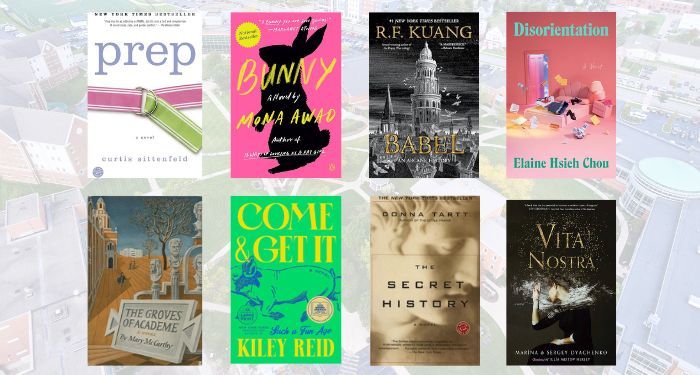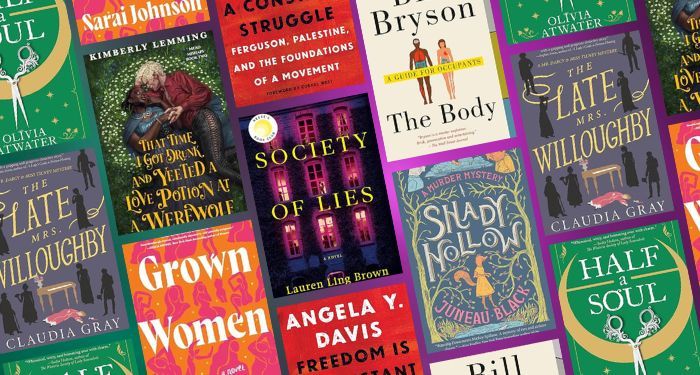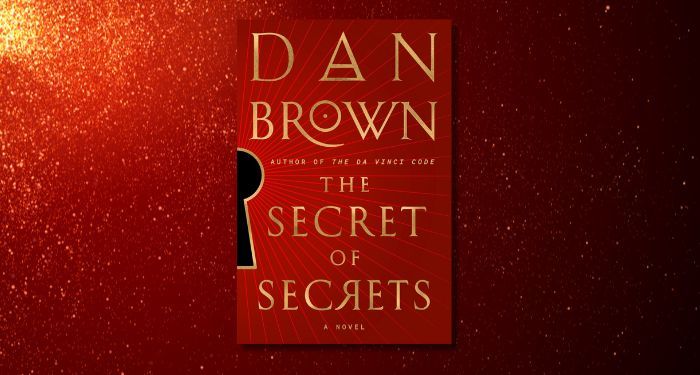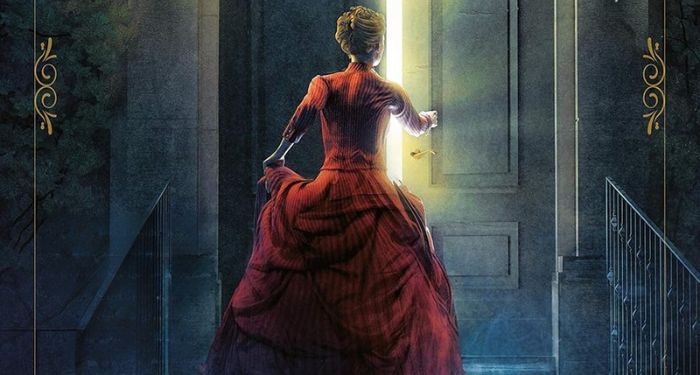A History of The Campus Novel
What campus novels do is create an immersive world where the setting is in and of itself a crucial character in the book. These books typically feature young adults out on their own for the first time, learning how to navigate a new place with new people, new responsibilities, and more freedom than they have likely ever experienced before. They can also focus on the faculty and staff on those campuses. Campus novels are a world unto themselves, and because they run on a well-established timeline—the semester or the quarter—a story and relationships can play out in ways that most readers are familiar.
The campus novel is not a genre. The campus novel is a setting. It crosses genres to include campus mysteries, campus fantasies, and more. For the sake of ease, the campus novel explored here will be called a genre, and it will be limited to those titles set at institutions of higher education. This is also a history, not the history, so it is far from comprehensive.
The First Campus Novel
In what is a common story about almost any genre, the first book to be written in that genre is up for dispute. Given that higher education institutions began in the US in the early-mid 1630s, and that higher education had been established across the globe even earlier, it only makes sense that fiction writers would take inspiration as these schools expanded across the world.
But it wasn’t until the 1950s that the genre truly bloomed. The ending of World War II led to more young people enrolling in higher education. The bulk of those enrollees were, as you might guess, predominantly white and from middle and upper classes and the college experience from that era onward became both a status symbol and a defacto for maintaining class while seeking to move rank.
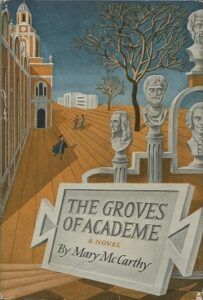

Many believe the first “official” campus novel is 1952’s The Groves of Academe by Mary McCarthy. It is a work of satire, based on some of the experiences the author had as a college professor, and it follows Henry Mulcahy after he is let go as an instructor at Jocelyn College.
Elaine Showalter, an academic scholar who wrote a book about the history of the campus novel called Faculty Towers: The Academic Novel and Its Discontents, deems this particular type of campus novel focused on the instructors the “professorromane”: a bildungsroman about the life and career of the academic. Showalter acknowledges in the preface to her work that this is the style of campus novel she prefers, and as such, has designated a handful of other titles as the true “first” campus novel. Those include The Masters by C. P. Snow, published in 1951, as well as a host of older titles like Jude the Obscure by English writer Thomas Hardy, published in the late 1890s, and The Professor’s House by Willa Cather.
Where the campus novel that focuses primarily on the faculty comprise the professorromane, there is another term for those which center the stories of the students: the varsity novel. Scholars point to Evelyn Waugh’s 1945 Brideshead Revisited as the template for most varsity novels published since. Waugh’s novel, as well as another oft-cited title deemed the first campus (and varsity!) novel, Lucky Jim by Kingsley Amis, both are by English writers and set on English campuses.
McCarthy emphasizes in her work that campus novels have a long history of being male-dominated. That’s both in terms of the authorship and main characters. But that has shifted significantly since the publication of one of the most well-known campus novels, The Secret History by Donna Tartt. That’s seen pretty dramatically as authors like Jane Smiley, Zadie Smith, and Marisha Pessl publish their own campus novels in the coming decade and a half.
The growth in women writing campus stories mirrors the continued growth of women both in faculty and student roles in colleges and universities themselves. Given the increased rates of faculty and students of color in colleges and universities over the last two decades or so, it comes as no surprise that more novels by and about the lives of those of the global majority on college campuses have arrived. Authors like Kiley Reid, Elisabeth Thomas, and Brandon Taylor are among those who have deepened the genre in just the last few years.
Subgenres and Categories of the Campus Novel
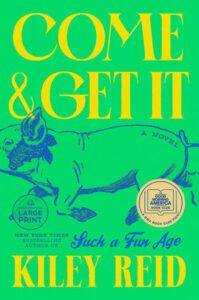

Because the campus novel isn’t a genre but a setting, it can transcend genre, much like horror or humor. The campus novel is ripe for everything from mystery and horror—look to older titles like the Kate Fansler series by Carolyn Gold Heilbrun, which follows a New York professor who solves murders on campus, and to newer titles like Catherine House by Elisabeth Thomas, following the unraveling of an elite group of students on a college campus and the secrets undergirding the institution. There are also fantasy campus novels, and among the most prominent and popular is the bestselling Babel: Or the Necessity of Violence: An Arcane History of the Oxford Translators’ Revolution by R. F. Kuang.
Dark and light academia fall within the campus novel world as well. Dark and light academia are descriptions of aesthetics, rather than flavors of genre, but each can describe a specific feel or vibe of a book. Dark academia, as the name suggests, is a bit darker, with rich browns and deep reds and greys. It embraces themes of tragedy and sadness and the bigger philosophical questions about the meaning of life and death. Dark academia is, in a sense, pessimistic (or, perhaps, better situated as “realistic”). Light academia is more shades of cream and taupe, with themes of friendship, happiness and freeness, and in contrast to dark academia, is much more optimistic in tone.
Themes and Tropes in the Campus Novel
The campus is a world unto itself that mirrors the social, political, and economic realities of the broader culture. While the students or faculty may be sheltered by a singular institution, that shelter provides the opportunity to truly see those challenges under a tight lens. College campuses often pride themselves on how they attract a diverse student body and faculty. This is not only in terms of race or ethnicity but also in terms of social class—so many campus novels present the ways in which scholarship students may feel alienated among classmates and the institution more broadly because the differences between the haves and have-nots can be especially noticeable when it is your roommate who reminds you in your own living space.


Student expectations and worldviews are challenged on campus. This begins the minute they arrive and continues as they worry through course assignments, experience their first strong romance or a devastating friendship breakup (all made more complex by the closed environment), and are asked to navigate difficult professors and beliefs that do not align with their own. On the faculty side, there’s inter-faculty drama, the worries about publishing or perishing, student debacles, and the precariousness of their field. Do they spend most of their time teaching students? Is that left to their teaching assistants and if so, how is that relationship working? And, given that most college attendees are over the age of consent, what happens when a professor or student finds themselves entangled in a romance. The ethics and challenges abound.
None of this touches on the greater question of whether or not higher education is itself a cult and if some of the groups and organizations within it, such as fraternities or sororities, are cults-within-a-cult. As Amanda Montell explains in her book Cultish: The Language of Fanaticism, cults aren’t limited to what you immediately picture and that not all cults are bad or dangerous. Cults are developed through shared sets of language, beliefs, and practices. Think about the implications and meaning behind something as simple as the college cafeteria never being called the cafeteria but instead being called something like the scramble.*
Historically, and still today, the campus novel has been used as satire or for humorous effect. Colleges and universities are ivory towers in the public imagination, after all, so the cloistered environment is an opportunity to peel back that perception and show what is really going on.
The Future of the Campus Novel
Since the growth of the campus novel, there’s also been a growth in writing about the death of the campus novel. In 1997, Joseph Bottum asserted that the genre had become a torrent, thanks to the way that more writers were becoming college professors and saw this as a prime setting for them to publish (unable to find the original article, it’s impossible to see where or how Bottum qualified his assertion in conjunction with the rise of writers who weren’t white men contributing to the genre). When a genre is popular with readers, of course publishers seek to produce more books to capture the zeitgeist. We see that today with romantasy. That doesn’t mean the genre is in crisis or there aren’t future entries into it. It means that the doors are pulled further open for diversifying it.
But college and university life is a different prospect in 2024 than it was even a decade ago. Kate Dwyer, writing for Esquire last fall, makes a compelling case for the changing campus novel and its shift in popularity. Today’s students are looking for something different when they pick up a campus novel. They’re far less interested in the satire or the commentary on the academic life. They’re looking to see their own experiences and worries about whether or not the experience is worth the life sentence of exorbitant student loans. They also want to see more non-traditional experiences represented like those portrayed by memoirist Stephanie Land in her bestselling Maid and campus-focused Class.
What’s more, the campus itself is no longer an insular space. In a world where campus news is national news and where higher education is under constant scrutiny and political punditry, there is little separation anymore. But it’s not just that. The campus novel of today necessitates a better understanding of how many cultures exist within one school—campus novels can be too quick to assume that the ivory tower is an elite white institution alone. A more diverse canon of campus novels is still being constructed, but those titles often held up as prime examples look nothing like the real-world campuses of today’s students and faculty.
As long as there are colleges and universities, there will be campus novels. But rather than suggest we are at the end of the genre, perhaps it’s better to consider the campus novel at a crossroads between depicting a fantasy of academia and the reality of academia for today’s students and staff.
A Campus Novel Reading List
To end this short history of the campus novel, here are a few titles from across the years (and across the globe) for your reading enjoyment. Some are ones I’ve pulled out, and some are recommended favorites from the staff at Book Riot. Grab your favorite warm beverage, a cozy varsity sweatshirt, and curl up on your couch or the steps of a local college if you’ve got one, and enjoy.
*My college’s dining hall was called the Scramble. That was because the norms were no lines but instead a free-for-all where you just went to whatever station you wanted food from and grabbed it. That becomes weirder the longer you think about it.

